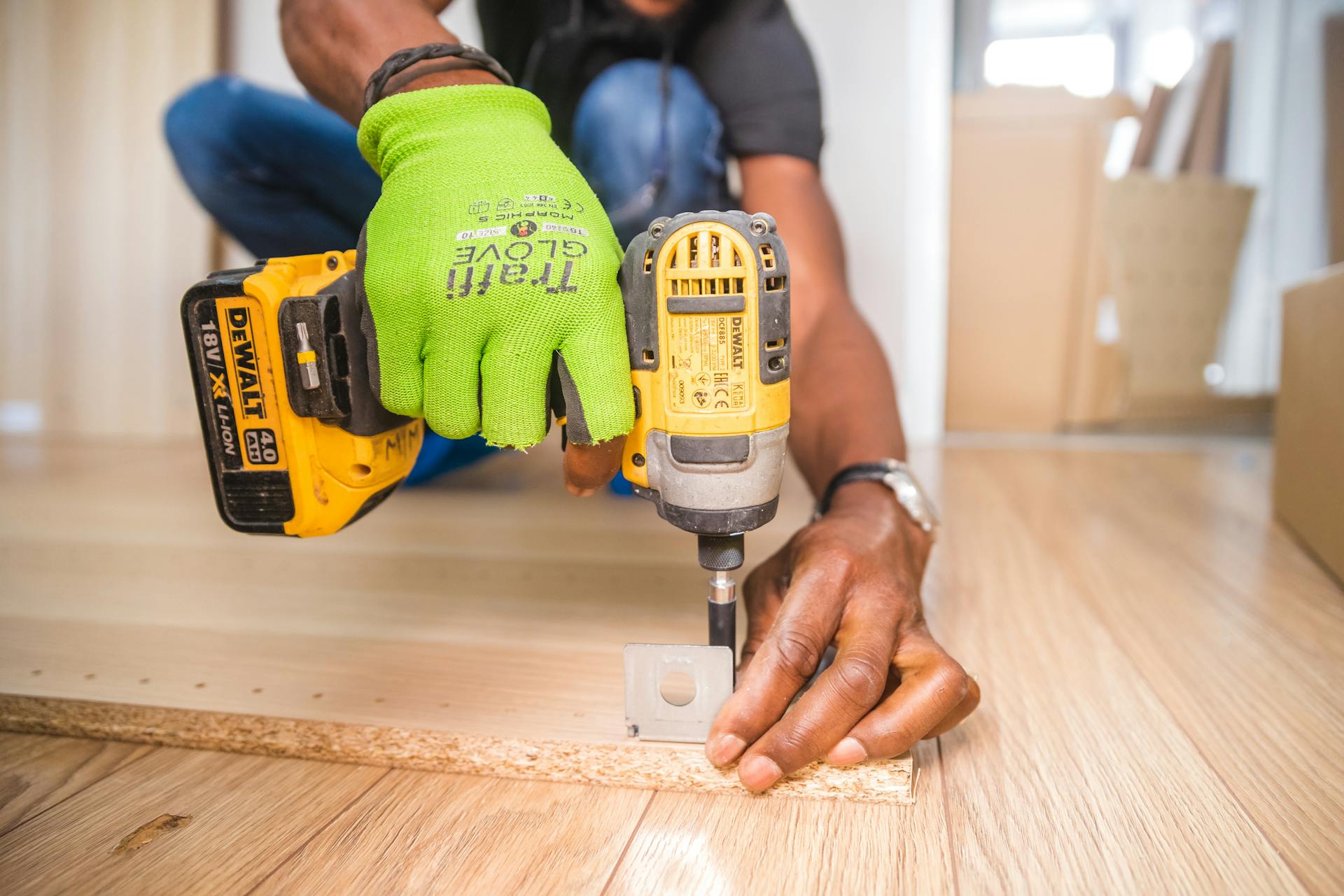
Are you tired of hearing the sound of your neighbor's footsteps, cars honking outside your window, or your family members talking loudly in the next room? Then acoustic insulation might be what you need. There are various types of acoustic insulation available in the market that can help you reduce unwanted noise and create a peaceful environment. In this article, we will provide a quick summary of some of the most popular types of acoustic insulation.
Iron Whale Asbury and Softsound Material are two of the most commonly used types of acoustic insulation. Iron Whale Asbury is a type of spray foam insulation that is applied to walls or ceilings to absorb excess noise designed to make life more comfortable for homeowners living in noisy areas like Asbury Park. On the other hand, Softsound Material is a lightweight and flexible material made from recycled cotton fibers that can be installed on walls or ceilings to reduce sound transmission between rooms. According to TSG Design Photo founder Megan Lawrence, both materials are effective at reducing unwanted noise levels in residential and commercial spaces.
On a similar theme: Acoustic Design Architecture
Quick Summary:
Noise pollution has become an unhealthy amount in our daily lives. The World Health Organization and the European Union's population both recognize the significant impact of noise pollution on people's health. Noise levels that exceed a healthy amount, with equivalent sound pressure level exceeding 55 dB, have been linked to numerous negative health effects.
Acoustic insulation has been gaining popularity over the past decade as a solution to noise pollution. With various types of acoustic insulation ranging from wall insulation to ceiling trellises, there are many options available to tune spaces and reduce noise levels. Acoustic insulation solutions include separating floors, office building sound insulation boards, stone wool insulation, and sustainable options.
John Johnston, Director of Systems Development at a leading acoustic insulation company, explains that there is a growing interest in accessible products that offer valuable solutions for noise reduction. A wide variety of acoustic insulation solutions includes ceiling baffles, which can significantly reduce the noise coming from above. By utilizing different types of acoustic insulation in various parts of a space or building, it is possible to create a peaceful environment while reducing the negative effects of noise pollution on human health.
Valuable Resources for Your Downloading Endeavors

If you're looking to improve your knowledge about acoustic insulation, there are plenty of resources available online. One way to discover ways to reduce noise pollution affects and create a productive workplace environment is by visiting different websites that offer information on the topic. These sites provide articles, case studies, and helpful tips on how to enjoy peace in a noisy world.
As the sustainability wave continues to grow, it's important to learn about the harmful impact of noise pollution on our health and the environment. By downloading ebooks or white papers from reputable sources, you can gain an understanding of how healthier buildings are essential for our overall well-being. These resources will enable you to take steps towards creating a more sustainable future while improving your quality of life.
Whether you're an architect, engineer, or simply someone interested in learning about acoustic insulation, having access to valuable resources is crucial. With so much information available at your fingertips, you can educate yourself about the latest trends and best practices in the field. By doing so, you'll be equipped with the knowledge needed to make informed decisions when it comes to creating healthier spaces free from noise pollution.
The Importance of Acoustic Insulation for Your Space
Noise affects health, and it can have a significant impact on our well-being. Exposure to unsafe sound levels can lead to accelerating hearing loss, disrupting sleep and reducing productivity levels. In fact, over 40 percent of people aged 12 to 35 years old have been exposed to potentially harmful noise levels due to entertainment venues - such as concerts and nightclubs. That's why adding sound insulation is crucial to any space.
Whether you're dealing with busy offices or urban living spaces, nuisance noise and external noise pollution can be a significant problem. By significantly reducing problems caused by sound transmission and vibration passing through building elements, acoustic insulation can make a world of difference in your environment. Key benefits include improved concentration, enhanced privacy and reduced stress levels.
If you're planning renovation projects or constructing a new building, consider investing in quality acoustic insulation materials. Whether you're looking to minimize the disturbance created by major music venues or simply seeking a quieter home office environment, the benefits are undeniable. With the right materials and installation techniques, you'll enjoy better comfort and peace of mind knowing that unwanted noise won't interfere with your daily routine.
Discover the Benefits of Stone Wool Insulation for Your Home
If you're looking for an effective way to reduce sound transmission between adjacent spaces, incorporating sound insulation into your design plans is one of the easiest ways to do so. Rockwool sound insulation rolls, slabs, boards, and granulates are some forms that Rockwool manufactures sound insulation. You can use stud wall frames with stone wool insulation to reduce flanking sound transmission and block interior sounds.
When selecting materials for wall insulation, acoustics objectives matter as much as energy efficiency goals. Wall insulation rockwool's products are incredibly effective at absorbing sound and act as a sound barrier wall. The acoustic insulation inside also provides thermal insulation that can help reduce energy consumption, making buildings more energy-efficient and reducing their energy demands while generating renewable energy.
Stone wool insulation carries many benefits that make it an efficient, cost-effective solution for decarbonizing society. Rockwool products are made by spinning molten rock or steel slag into a wool product that is then pressed into sheets. This creates an incredibly durable material with fire-resistant properties that is also fully recyclable. As such, stone wool insulation meets stringent limits set by third-party certifying bodies including UL, Intertek, QAI and ICC-ES on 360 volatile organic compounds (VOCs).
Acoustic Panels and Partitions
Acoustic insulation solutions are crucial for any office space to reduce sound and improve the listening experience. Juan Carlos Bolomey, Primacoustic's product manager, explains that there are many options available, including wall panels, ceiling panels, bass traps, and customized cloud panels. Each of these products has unique visual design and acoustical functions to mitigate sound refraction echoing in specific areas of the office.
FSorb specializes in acoustic wall and ceiling panels made from recycled polyester plastics. The extruded recycled polyester is shaped with adhesives and cut to shape before being painted or screen printed. The company also offers partitions that decoratively divide smaller work areas while still offering patterns for partial division. Doug Bixel, FSorb's CEO, explains that their products benefit greatly from open ceilings because they act as physical barriers between people residing in noisy areas and the neighboring team who may be bothered by the sound coming directly overhead.
Arktura creates acoustic products that support biophilic design - connecting people with nature through environmentally friendly sound dampening properties. Their award-winning designs feature biophilic elements like Vapor Bloom which brings life into an office setting with nature-evoking patterns resembling leaves or petals. Vapor Sky emulates a cloud-like pattern bringing the sky indoors while Vapor Hue Flora features layers of organic prints creating a biophilic floral landscape. Ricardo Ortiz, Arktura's brand experience copywriter and communications lead wrote about their previous contribution to collaborative work spaces: SoftGrid Acoustic Baffle Systems found on office floors and breakout areas around collaborative workstations.
Find the Best Soundproof Insulation: A Guide to Look For!
If you're tired of hearing unwanted noise from outside or inside your home, soundproofing insulation is a great solution. The best types of acoustic insulation are those that have high density and mass, as they can absorb more sound waves. Look for materials such as rockwool, fiberglass, and cellulose when you start shopping for soundproofing insulation. With these materials, you can create a peaceful environment in your home and enjoy some well-deserved peace and quiet.
1. Acoustic Insulation
If you're looking to soundproof a room or building, acoustic insulation specifically designed for that purpose is what you need. Regular insulation may not have the soundproofing properties acoustic insulation does, so keep in mind acoustic insulation will make things easier for you. With added convenience and soundproofing math on your side, you won't regret investing in acoustic insulation.
2. STC and NRC Ratings
If you're soundproofing, you've probably come across the terms STC and NRC ratings. Here's the soundproofing math in case you'll want to know. STC stands for Sound Transmission Class, measuring how much a product blocks airborne noise, while NRC stands for Noise Reduction Coefficient, measuring how much a product reduces in-room noise. These are fairly technical definitions which an audio tech nerd here would enjoy reading about but what it comes down to is that high STC ratings are preferred for preventing environmental noises from entering your recording studio or home theaters/practice rooms, whereas high NRC ratings are best for improving acoustics matter within a space.
Get 16 renovation cases

Are you looking for inspiration for your next acoustic renovation project? Look no further than the case study bundle that includes 16 real-life examples of successful soundproofing projects. This comprehensive guide, spanning 29 pages, showcases a variety of 2018-19 projects ranging from public buildings to historical landmarks.
Each case study highlights innovative stone wool solutions such as facade panels and other materials that have been proven to reduce noise and improve fire safety. Whether you're working with an old building in need of updating or a modern space requiring acoustic insulation, these examples offer valuable insights into best practices for improving sound quality.
So why wait? Download the case study bundle today and discover how acoustic insulation can transform your next renovation project. With 16 different examples to draw from, you're sure to find inspiration and ideas that will help you achieve your goals and create a space that's both beautiful and functional.
Green Solutions: Boosting Efficiency to Save Energy

Green solutions are becoming increasingly popular as the world becomes more conscious of the need to reduce energy consumption. One way to achieve this is through the use of acoustic insulation, which not only improves sound quality but also helps to retain heat and save energy. There are a variety of types of acoustic insulation available, each with its own unique benefits and drawbacks. Some types can even be easily removed for convenience or future changes to the space. With so many options, it's important to do your research and choose the right type for your specific needs.
Determining Your Required Amount: Essential Tips to Consider

When it comes to acoustic insulation, determining your required amount is crucial. Building acoustics focus on how sound transmission can be reduced through internal walls, floors, and ceilings. The transmission loss (TL) and sound reduction index are key factors in blocking sound and reducing decibels (dB). Insulation works by absorbing or reflecting unwanted noise, but the type of insulation you choose will depend on the spaces passing through building elements adjoining primary partition separating walls and poorly sealed doors and windows, as well as uninsulated pipelines.
To determine the number of panels required for your project, consider direct flanking paths that could contribute to sound transmission. Good room acoustics involve not only insulating against unwanted noise but also absorbing echo within a room. This helps improve the internal sound field quality and create a calmer indoor living environment. Some benefits include fire resilience and water absorption.
Local tools such as acoustic insulation roll slabs granulates and boards can help reduce noise between walls and floors in a dwelling adjacent to other properties. By insulating against unwanted noise airborne impact, you can enjoy a quieter living space that promotes relaxation and productivity. To ensure that you get the best results from your acoustic insulation installation, consult with local experts who can recommend the most effective solutions for your specific needs.
1. The challenge
The challenge of acoustic insulation is becoming increasingly important in cities like Berlin, the capital city of Germany. With over 30 million people passing through the Berlin Brandenburg Airport (BER) each year, local residents are facing increased noise pollution created by flight paths. Different types of acoustic insulation can be used to reduce this noise and improve quality of life for those living nearby.
2. The solution
The solution to your sound insulation woes may lie in the different types of acoustic insulation available. Families approached with noise issues can seek advice from their local master roofer Hartmut Quappe, who is well-versed in the installation of these materials. From fiberglass batts to spray foam, there are various options to choose from depending on your needs and budget.
3. The results
The results are in, and it's clear that investing in improved acoustic protection for your home or office is a must. Not only does it reduce unwanted noise like aircraft noise, but it also has an added bonus of being an energy efficient rafter insulation system. In fact, studies have shown that this type of insulation can reduce energy costs by up to 30 percent. Keep reading to learn more about the different types of acoustic insulation available and how they can benefit you.
Frequently Asked Questions
What type of insulation is best for soundproofing?
Fiberglass and mineral wool are the best types of insulation for soundproofing due to their high density and ability to absorb sound waves. Other options include cellulose and foam, but they may not be as effective.
How much does soundproofing cost?
The cost of soundproofing varies depending on the size of the space and the materials used. On average, expect to pay between $1,000 and $2,500 for a single room. However, prices can range from $500 to upwards of $10,000 for larger or more complex projects.
What is the difference between sound insulation and acoustic board?
Sound insulation is used to reduce the amount of sound that passes through walls, floors, and ceilings while acoustic board is designed to enhance the quality of sound within a room by absorbing echoes and reverberation.
What are the different types of insulation?
The different types of insulation include fiberglass, cellulose, spray foam, rigid foam, and reflective. Each type has its own advantages and disadvantages depending on the specific application and budget. For more information on which type may be right for your needs, consult with a professional insulation installer.
Featured Images: pexels.com


